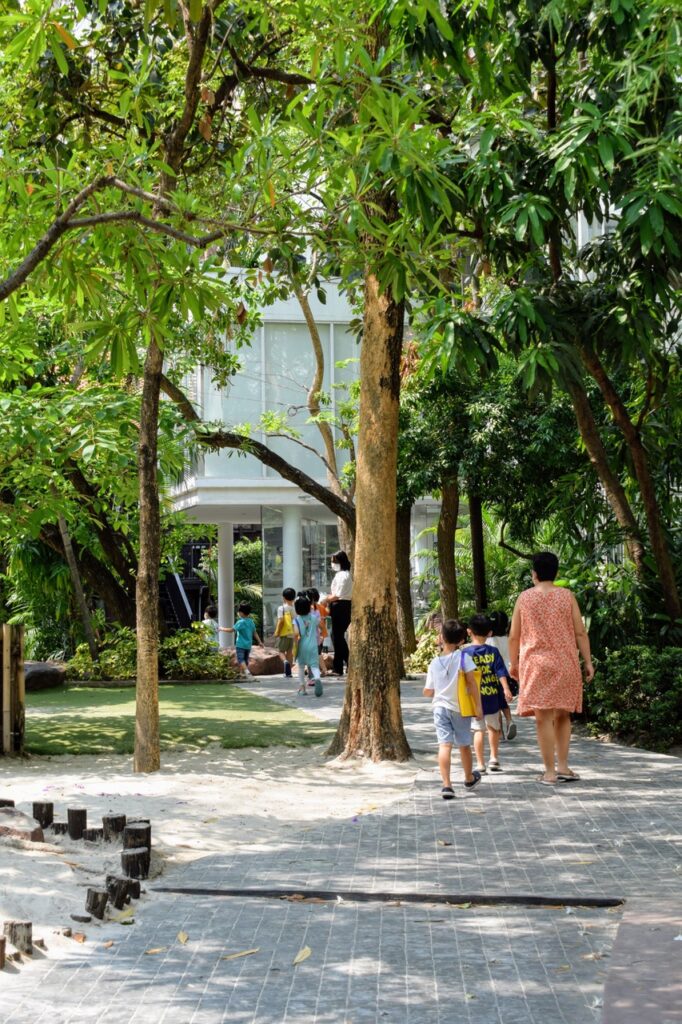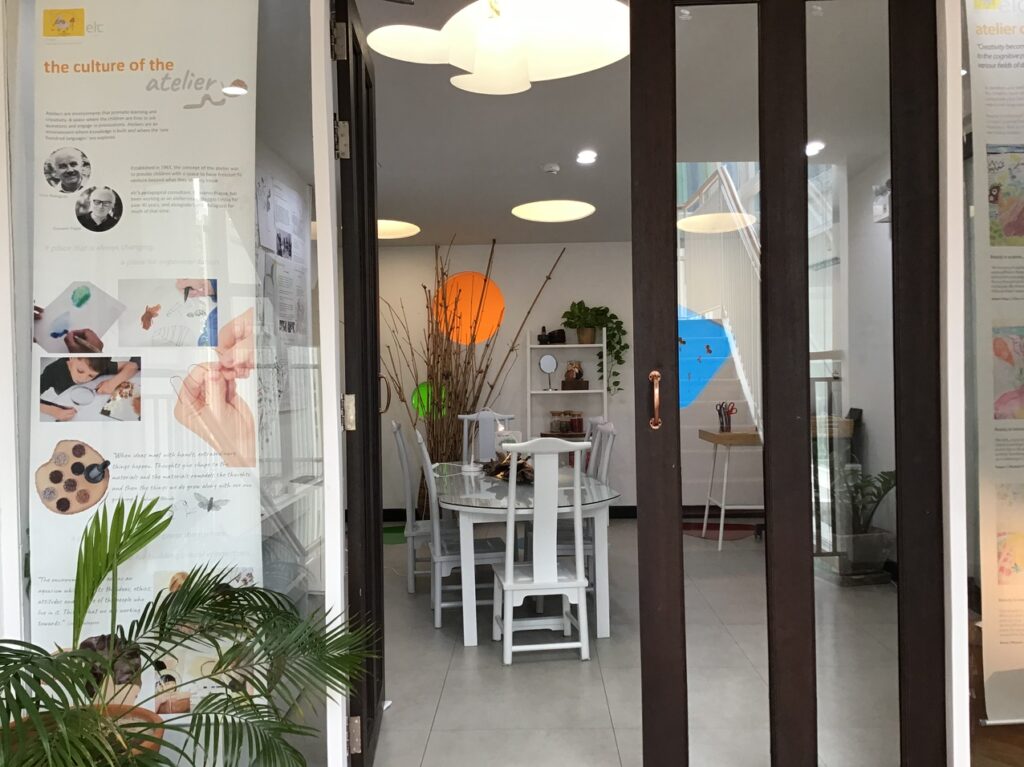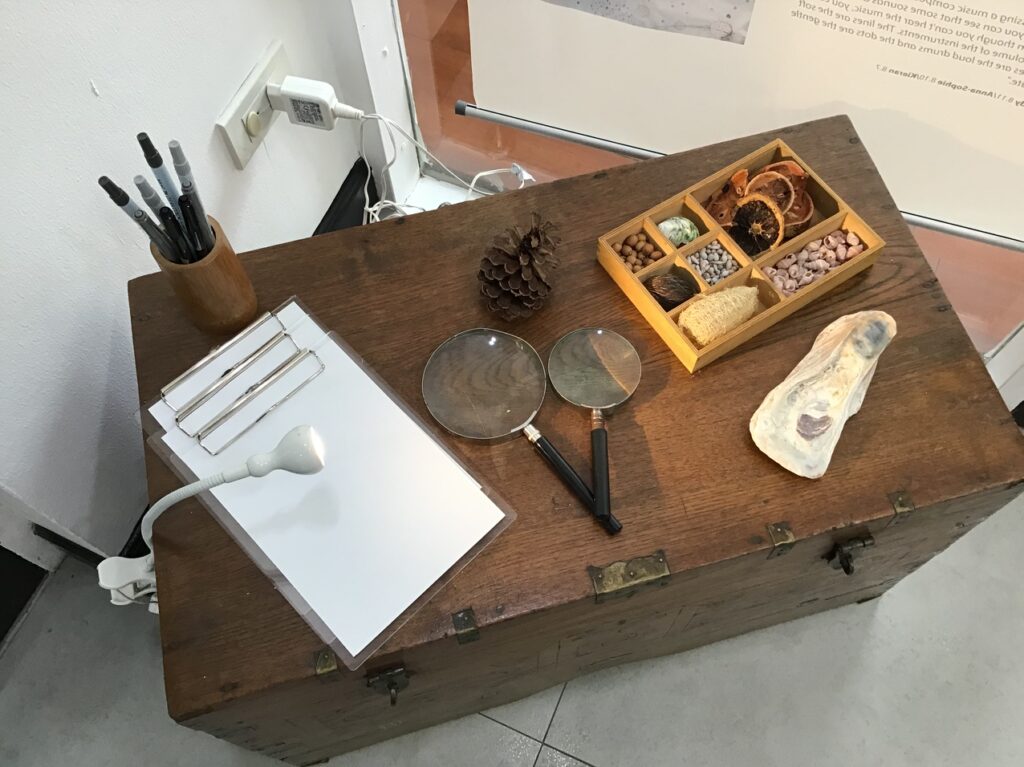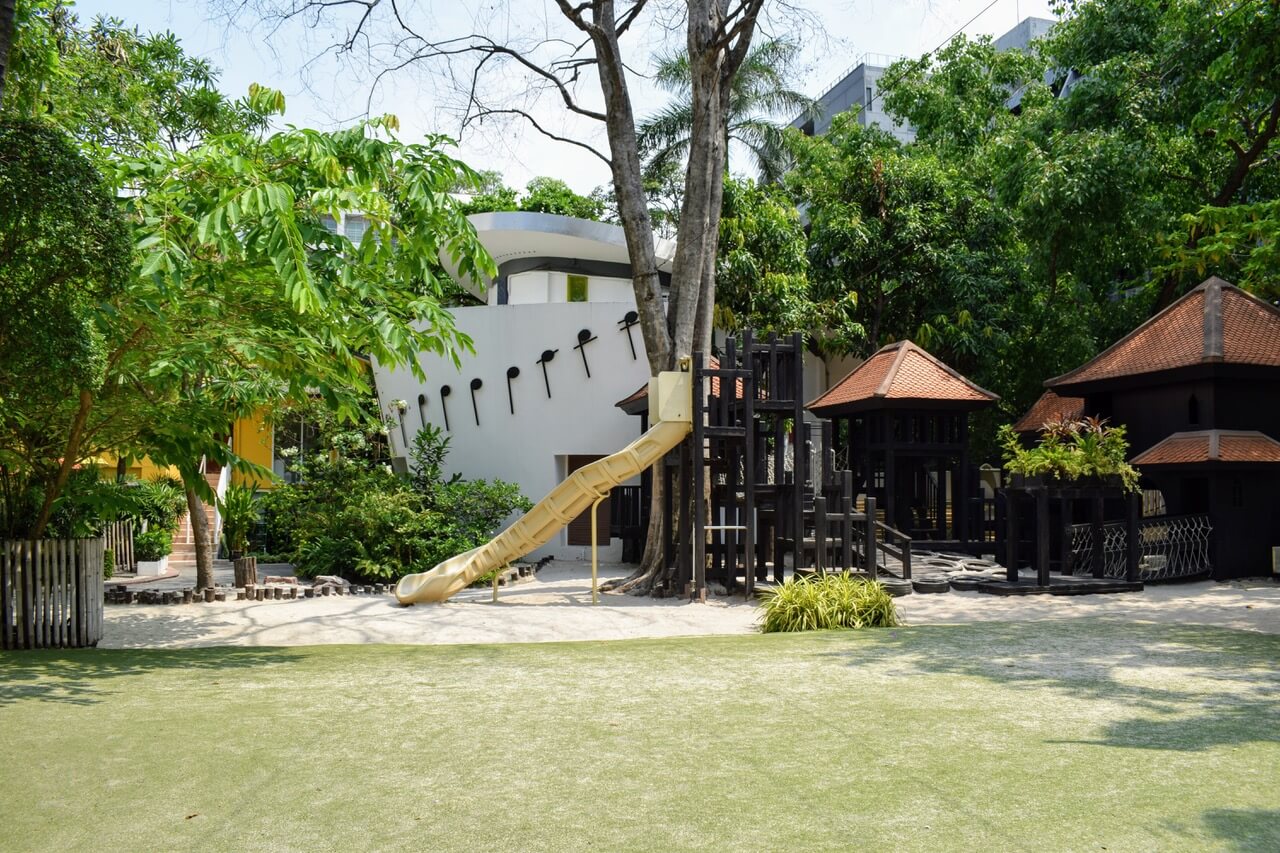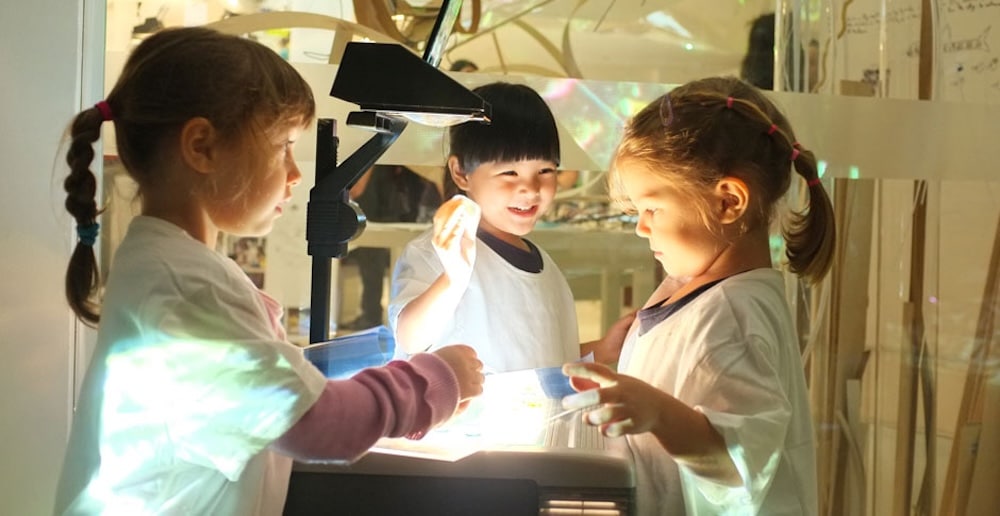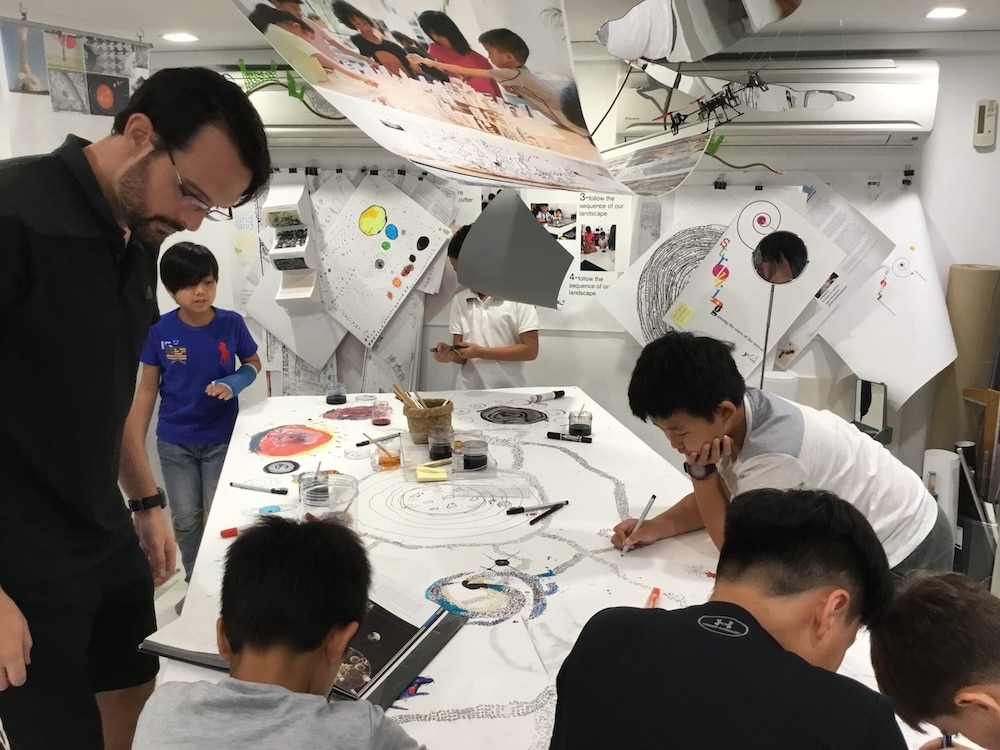There are three teachers of children: adults, other children, and their physical environment.
Loris Malaguzzi
How is the environment considered a third teacher at ELC?
The physical environment – including the architecture, classroom design, gardens, range of resources, light and sound, and so on – is critical to the process of teaching, learning, and a child’s overall well-being. Children can flourish in spaces that make them feel valued, stimulated aesthetically, intellectually, and physically, and most importantly, that facilitate strong, respectful relationships. At ELC, our environment is intentional and intrinsic to the learning process by way of consciously setting up conditions ripe for children and teachers to co-construct knowledge. These conditions begin with close attention to the aesthetic details of all our spaces – whether an atelier or an entrance way, its design is considered through the eyes of the child. Transparency is welcomed through the use of materials such as internal glass walls and windows to allow for natural light, which mirrors the way ELC values visibility in the teaching and learning journey. The beauty of our gardens and outdoor spaces inspires the imagination and fuels creativity, and the seamless intertwining of the ‘natural’ with the building structures strengthen the children’s sense of belonging in the world. Beyond these immediate ‘grounding’ aspects that bring calm and space for a child’s sense of self, our environment more directly influences and shapes as a third teacher. In the classrooms and ateliers, and through exploration in the natural world outside, children are exposed to a variety of open-ended materials that provide the basis for a learning provocation. Such a provocation could be something arising spontaneously such as a marching colony of ants which draws the fascination of the children. Another provocation could then be a set of pictures of different ant types laid out in a classroom alongside a variety of expressive art materials – a deliberate decision by a teacher to invite them to extend their ideas, ask questions, and deepen their knowledge. The ‘third teacher’ is always nurturing of both collaboration and the child’s developing autonomy by offering opportunities for group work and independent thought. To maintain responsiveness to the interests of the children, the environment is flexible; it can adapt and change in terms of space, scheduling, and materials, so as to be in tune with the teachers and children co-constructing.
At ELC, our environment is the ‘third teacher’ not only through the way it encourages inquiry, creative freedom, and collaboration, but it is also reflective of our values as a community- the children, the teachers, and our ELC families. As Loris Malaguzzi considers: ‘The environment should act as an aquarium which reflects the ideas, ethics, attitudes and culture of the people who live in it.’ A sense of belonging and being valued for who you are is at the heart of ELC, and applies to all within our community: where teachers are valued and thrive, children thrive, where children’s agency is respected and built into the environment, teaching can be a joyful partnership.
